While beauty is in the eye of the beholder, artisan is in the eye of the consumer … and the heart of the baker.
What is “artisan,” anyway? There’s no formal definition — or specific type of loaf, really — so people identify artisan based on their own context and what they find important. For some, it’s the grains; for many, it’s fermentation time. For others, it’s the oven in which the bread is baked. For New Haven, Conn.-based Chabaso, artisan bread comes from a combination of them all … and a little more.
“It’s not really cut and dry,” said Peter Abrams, director of baking and innovation, Chabaso. “People like to assume artisan bread is something that’s made by hand in an old method, start to finish. And while that certainly classifies as artisan, you also have to consider the breads that take those traditions and focus on the quality that comes from them. At Chabaso, artisan means a respect for those methods with the addition of automation where it makes sense. We are not a small neighborhood bakery where someone gets up every morning and makes her or his own bread by hand. But we are a bakery that grew organically and still uses the processes that stemmed from tradition.”
In an almost 40,000-square-foot production facility, Chabaso brings the ritual of artisan breadmaking into a modern era. And then, after an automated process that includes more than 20 hours of fermentation time, the bread heads into the world to fulfill its intended purpose. For this bakery, it’s not only about how the bread is made but also what it does: It influences.
Right place, right time
This may be a midsize bakery (100,000 lbs of dough a day), but Chabaso — named after founder Charles Negaro’s three children, Charlie, Abigail and Sophia — didn’t begin as a bakery at all. In its foundation, though, lives a DNA that drives Chabaso’s mission as bakers for a better future.
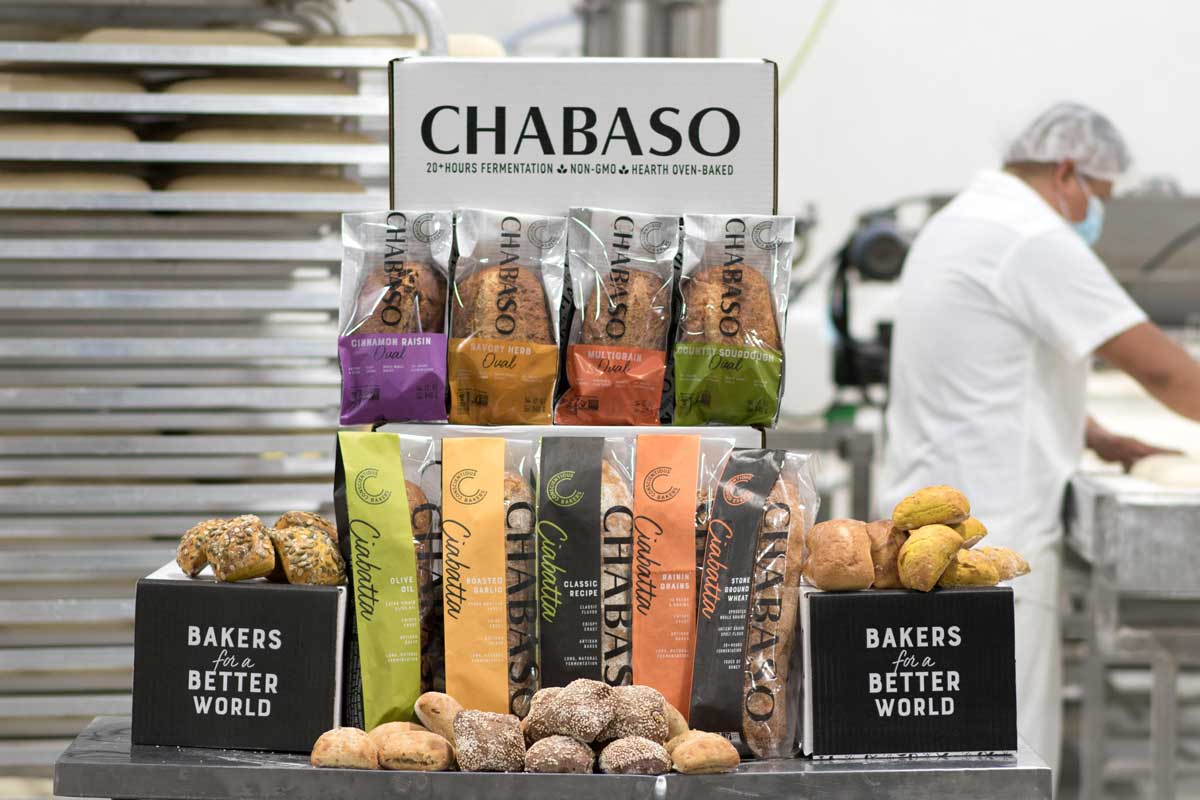
It all began in 1975 when Mr. Negaro opened Atticus, a bookstore in the Yale Center for British Art at Yale University in New Haven, a literal haven for foodies and high-functioning intellectuals. With a little help from some friends, he morphed the business into Atticus Bookstore Café in 1981 by offering a small menu. One of those friends — a former baker from what is known today as New French Bakery (part of Rise Baking Co.) in Minneapolis — introduced him to a baguette, and the game changed. Mr. Negaro found himself in a baking school in France with bakers who had recently founded Amy’s Bread in New York City and Grace Baking Co. in Richmond, Calif.
He came back, armed with artisan principles and sought help to make a baguette.
“I had the unbelievably good fortune of hiring a gentleman named Ken Ayvazian, who became one of the stars of the cafe in its early days,” Mr. Negaro recalled. “He was a genius. He made the best baguette in town, and from that, I decided to build a wholesale bread business.”
Chabaso got started with Mr. Ayvazian at the helm in a 5,000-square-foot bakery, which also housed production for Atticus (which is still in business in its original location). Grace Baking’s founder Glen Mitchell, whom Mr. Negaro met at the school in France, trained the bakery in poolish, which set the course for the future.
“We adopted it to what we were doing, and that’s what we’ve used ever since. It was the discovery that made everything work,” Mr. Negaro said.
It’s what made Chabaso an early trendsetter in artisan bread, and to this day, that poolish is Chabaso’s primary point of distinction.
However, many people contributed to the evolution of the myriad artisan products Chabaso bakes today.
“Chabaso has always been a good, safe plant. It’s just part of the growing-up process to formalize and raise the bar.”
Trish Karter, Chabaso
“My son Charlie worked every job in the bakery on his way to becoming c.o.o.,” Mr. Negaro emphasized. “He implanted a culture that allowed us to focus on quality.”
Today, Charlie Negaro owns Atticus, but that culture of quality is alive at Chaboso.
“Willie Bell has mixed dough and trained mixers for over 20 years,” Mr. Negaro said, noting the bakery’s head mixer also has master of fine arts degree from Yale and is still a practicing artist. “Dozens of bakers have contributed to our product development and to our culture of producing wonderful breads in a family environment.”
Scaling up for growth
Chabaso has come a long way since baking bread in the little facility just a mile up the road from Atticus. A lot has changed … but the tradition stays the same.
The bakery relies on the same poolish for its signature ciabatta. But today, the poolish, autolyse and final dough are all mixed in five 500-lb VMI spiral mixers, one for autolyse, one for preferment and three for the dough.
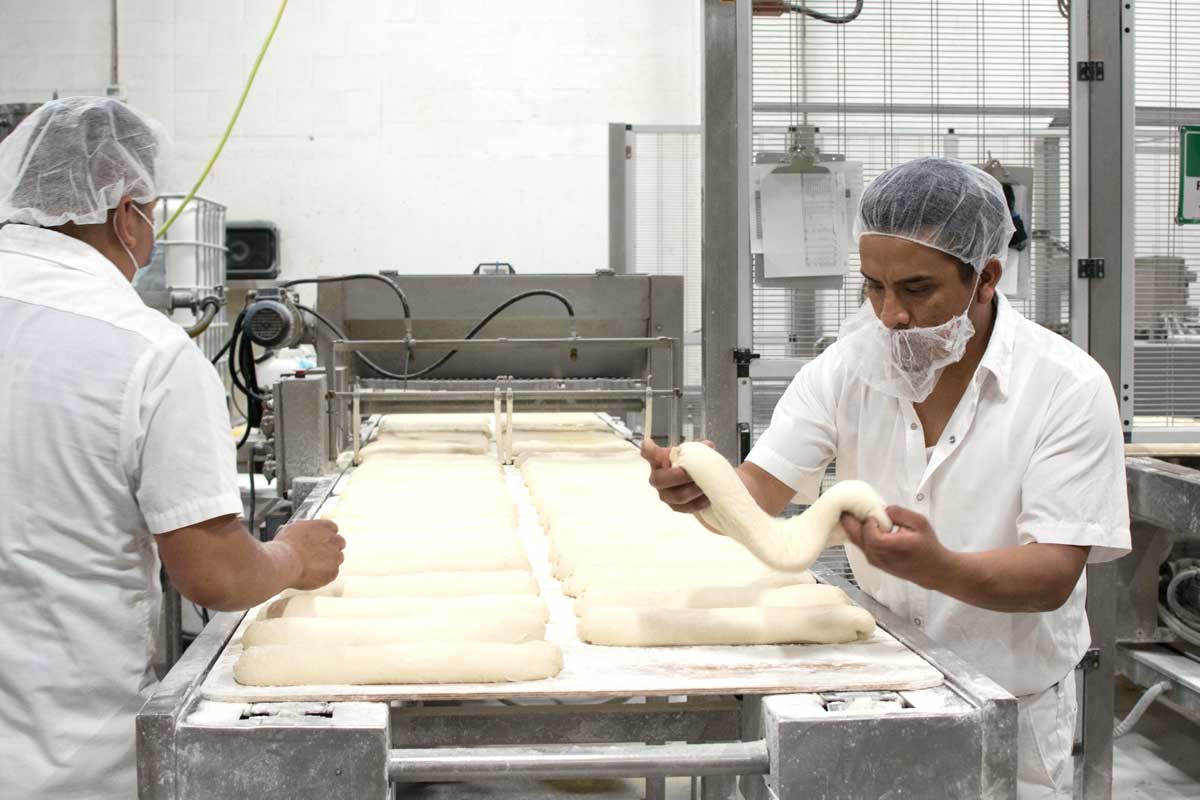
“Everything we do — all batches — use some sort of preferment,” Mr. Abrams noted, adding that some of the bread among the bakery’s 100 or so stock-keeping units may use levain, sponge or biga as well.
“Could we get away without these things?” Mr. Abrams pondered. “Probably. But we choose not to because it makes our process better. When we make the bread, the flavor is coming from time and fermentation. The longer we can ferment each part of the process, the more flavor we build.”
For the Chabaso ciabatta, life begins at the poolish when it ferments in buckets, 56 lbs at a time, for around 15 hours overnight before entering the final mix. Then flour is automatically loaded from one of two Contemar Silo Systems 50,000-lb indoor silos, and all other ingredients are hand-scaled.
Due to the high volume of buckets used in the fermentation process, Chabaso recently invested in an automated washing system from Douglas Machines Corp.
“We go through a lot of buckets, and this will cut down on time and labor,” Mr. Abrams said.
After mixing, the dough is hand-scaled into more buckets, where it enjoys two hours of fermentation before processing on either a WP Bakery Systems artisan bread line for smaller products such as cut rolls, sticks or square ciabatta rolls, or a Rheon stress-free makeup line for most all other ciabatta products, which were running during Baking & Snack’s visit.
On the Rheon line, dough is measured by weight, which reduces waste and requires less labor. The line’s checkweigher also ensures weight accuracy while providing the handmade look that artisan loaves are known for.
“Our bread is inherently inconsistent,” Mr. Abrams said. “Once it’s at a high hydration, there’s a lot of gas, so there will always be variations. The checkweigh system really helps with that.”
Once the small dough chunks enter the line, they travel as gently as possible through a series of stretchers and rollers (with the checkweigher underneath). After being reduced, the dough sheet is cut vertically, two at a time via adjustable circular cutters before running through a guillotine to create the final dough pieces.
Next, the pieces go through extra steps under a chain roller and pressure blade roller to set up the loaves. Mr. Abrams said Rheon would say this is technically not a “line” but a series of makeup components. But after more than a decade of doing business together, the equipment supplier has been able to organically build it out based on the bakery’s steady growth.
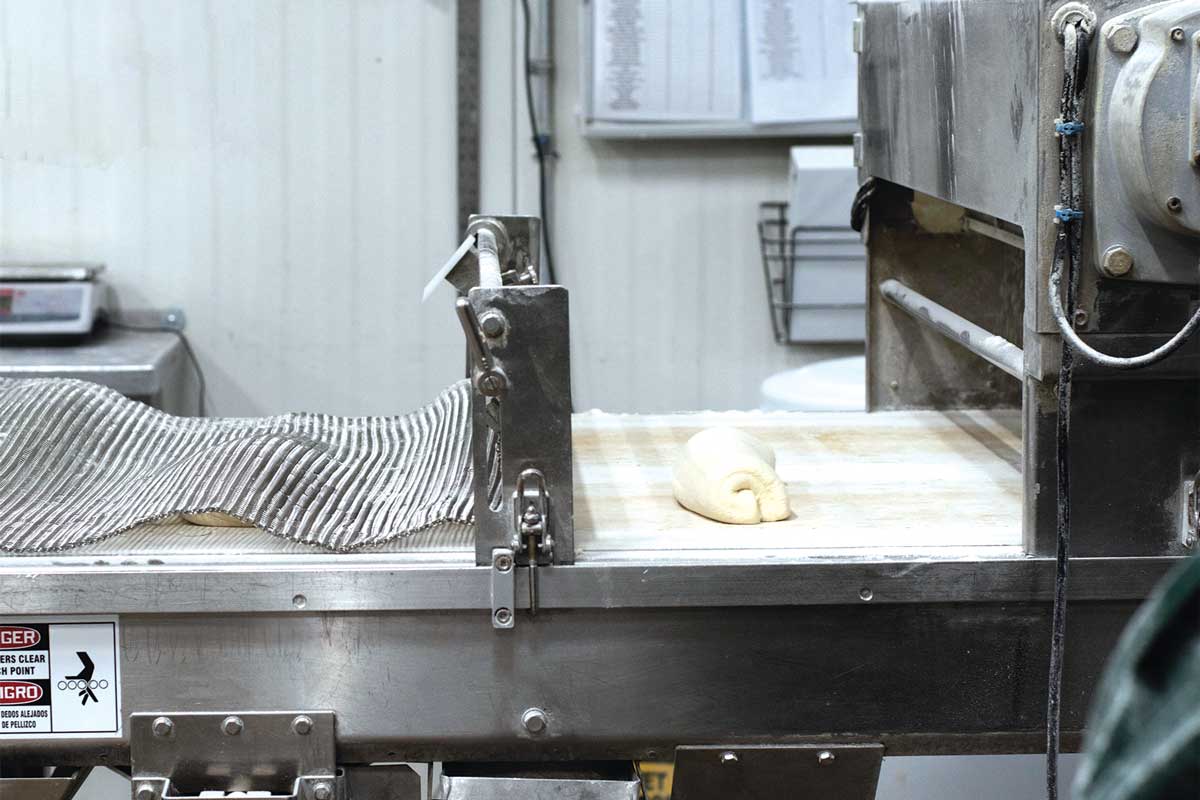
“Through the years, I’ve worked closely with Rheon to make improvements to this line,” Mr. Abrams observed. “They’ve been great about coming out and working with us, helping with what we need to fix or tweak and how we can improve our production.”
After a photo eye lines them up, the loaves are transferred onto peelboards for proofing. Connecticut still allows the use of wood boards, Mr. Abrams’ preference.
“I believe there’s a functional reason to use wood,” he explained. “It will absorb some of that moisture, which helps later in the process when our bakers hand-flip and stretch.”
The wood boards are also lighter than plastic, which makes it easier on the workers to manually load the racks that head into five proofers for more rest time ranging from 45 minutes to 12 hours, depending on the product type and size.
All this fermentation time requires the bakery to run three shifts five days a week and one shift on the other two.
Although automation has allowed Chabaso to make huge strides in its production — the scales have shifted on the proportion of direct-store delivery (D.S.D.) of fresh product to frozen par-baked shipments for national accounts — Chabaso still insists on certain manual steps. For example, dough is always scored, stretched and flipped by hand before it’s baked in one of two tunnel ovens: a 100-foot Gemini with stone plates or an 80-foot Pavailler with metal ones. Both function as hearth ovens with the bread being loaded directly onto the plates via wing loader.
Streamlining and strategizing
After baking to about 80% (most Chabaso bread is meant to be baked off in-store or at home), each oven discharges the loaves to a spiral cooling tower, where they run at ambient temperature before heading through metal detection.
D.S.D. products travel down a coiled chute to two packaging lines, and all others head toward a liquid nitrogen blast freezer and are then manually case-packed for shipments.
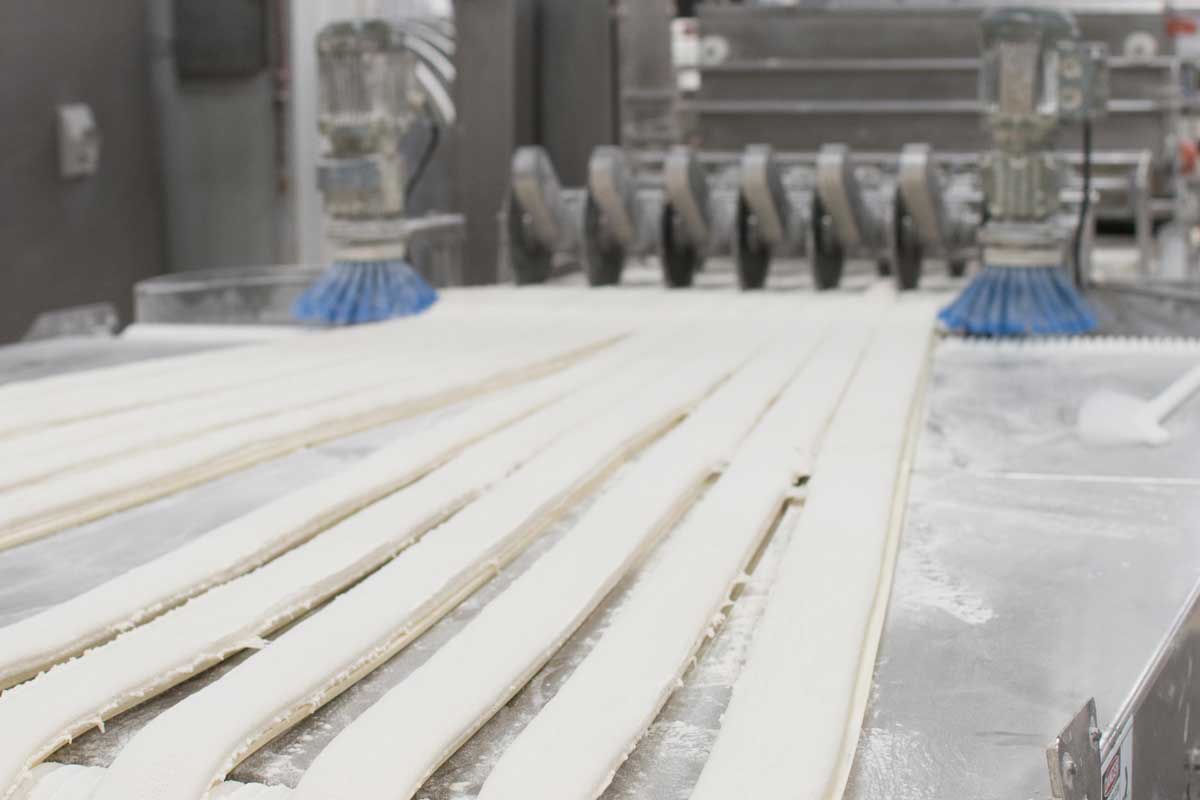
The packaging is ripe for automation, but space is currently a big constraint. One project on the horizon is replacing the blast freezer with a mechanical one to open up space for a case erector or other automated packaging systems to create more efficiency at the end of the line.
Chabaso did invest in an Ilapak flowwrapper that it used for one retail seasonal product last year. This was the bakery’s first foray into flowwrapping, and it plans to fire up the machine for more products in the future.
“We think flowwrapping will be a good thing for us,” Mr. Abrams said. “It cuts down on labor at the retail level and allows us to better control the whole process. Right now, we control it until it gets to the store. Then we have to just trust that our customers are baking off and packaging the bread properly.”
Aside from the flowwrapper and bucket washer, the capital plan is still just that — a plan — until the house is in complete order, said Trish Karter, Chabaso c.e.o. and acting plant manager. There is still work to be done in streamlining internal processes, without which new equipment cannot reach that needed capacity, which she expects to double in the next five years.
One does not launch a company or run a bakery without meticulous planning skills, and Ms. Karter demonstrated that when she took the helm at Chabaso. Shortly after joining the company, she shut down production for two days and inspected the plant top to bottom, often crawling on her hands and knees to scrutinize every nook and cranny.
“I didn’t go home for 36 hours,” she recalled.
“Chabaso has always been a good, safe plant,” she said. “It’s just part of the growing-up process to formalize and raise the bar.”
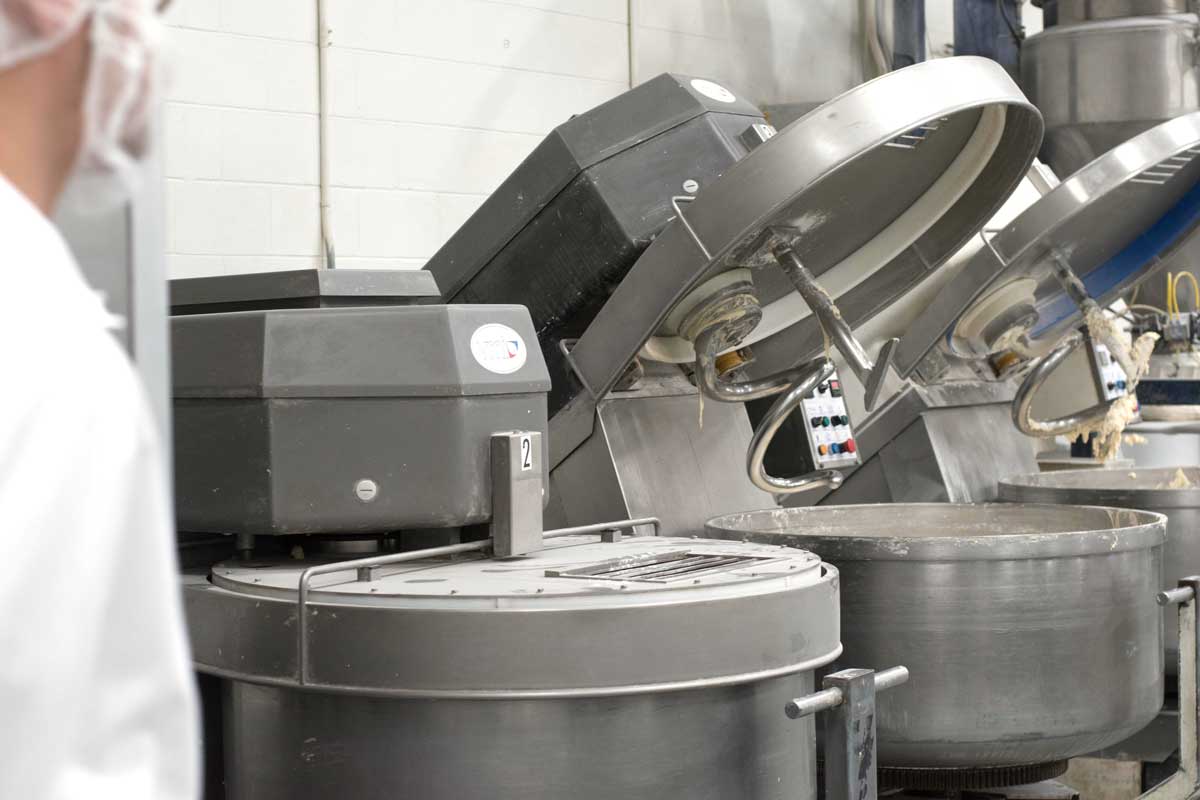
For two consecutive years, Chabaso has received BRC AA ratings and is also working toward B-Corp certification. Chabaso is also certified kosher pareve for its two artisan lines and kosher-dairy for a third brioche line that is isolated from the other two.
Today, Chabaso is focused on streamlining.
“We’ve been madly revising and expanding SOPs, and we’ve brought in talent to help us better identify and understand industry best practices,” Ms. Karter said. “It’s a big work in progress.”
The company is either upgrading or introducing new systems across the board.
“We have a long list of systems, plug-ins, internal designs and externally supplied resources from our new CRM to the new EDI system we’re implementing,” Ms. Karter said.
These will eventually eliminate the manual element of the data management and streamline the whole process.
“We’re loading, culling, cleaning and coding, writing reports, and rethinking every day what we need to do,” she said. “These are the building blocks on the strategic plan.”
Once these are in place and the internal processes are water-tight, execution of the capital plan will naturally follow, leading to smooth production and organic growth. It also will allow the bakery to better respond directly to consumers through digital retail and social media outlets. Ultimately it will enable Chabaso to accomplish its mission.
This article is an excerpt from the August 2019 issue of Baking & Snack. To read the entire feature on Chabaso, click here.




